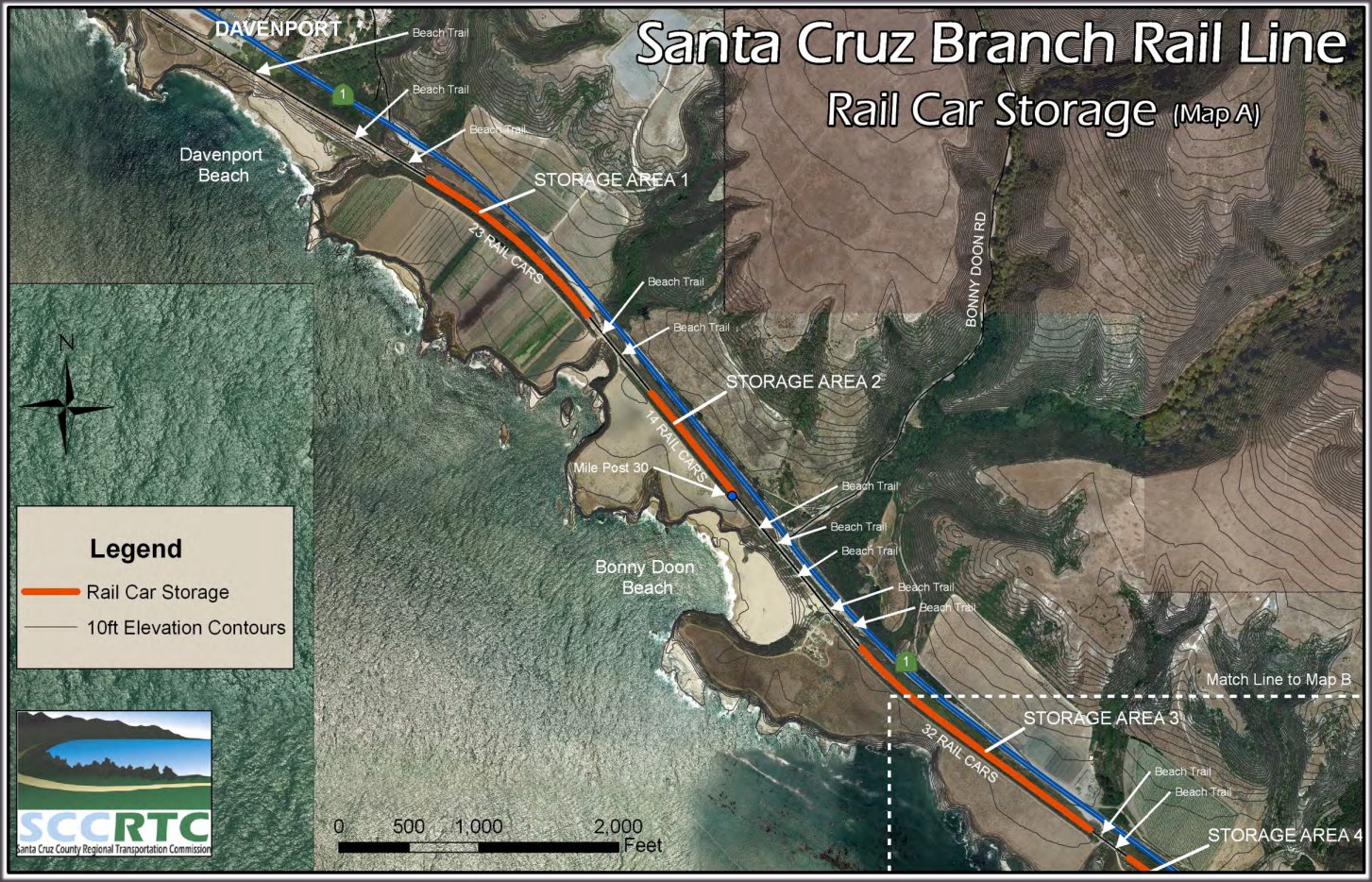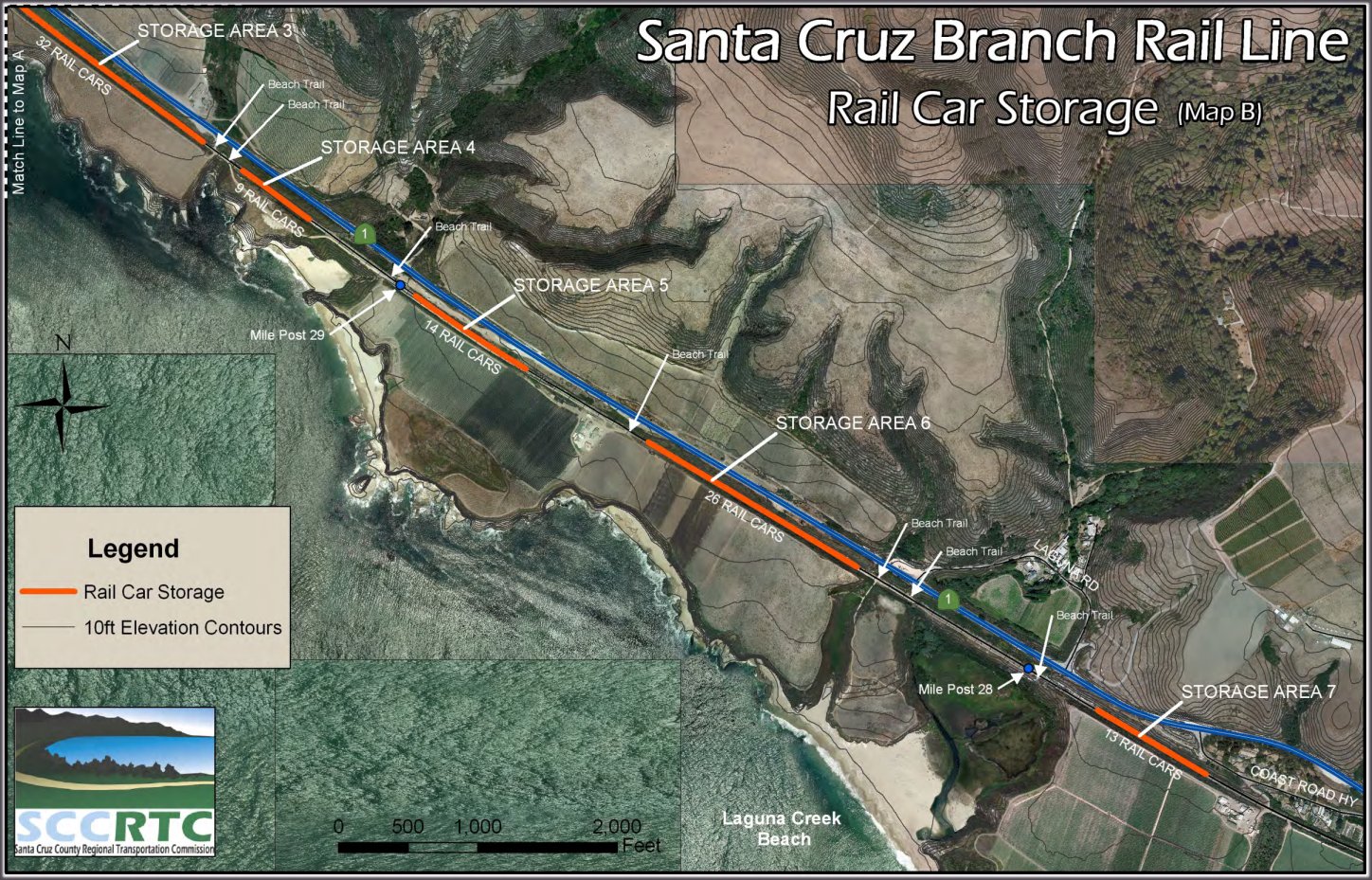| Dear Reader, Below
are my comments about issues I see in the draft
Progressive Rail
contract. Each comment includes a reference to the source contract section(s).
I believe the concerns I have raised are relevant whether you want passenger
rail service, a trail, or any combination thereof.
I have done my best to
provide a fair interpretation of the contract. If I have made
mistakes, let me know and I will endeavor to correct them.
-Ron Goodman, 
P.S. "Railway" refers to Progressive Rail, the company bidding to take
control of rail service in the county.
To send comments to the RTC about whether or
not they should sign this contract, email
info@sccrtc.org. You can
address your comments to Deputy Director Luis Mendez. Here is a
sample email structure:
To:
info@sccrtc.org
Dear Mr. Mendez,
I am writing to respectfully ask
that the SCCRTC not sign the current contract with Progressive
Rail. There are significant issues that put our community at
risk, such as:
(whichever issues you
feel are important).
These issues should concern us
regardless of whether or not we support the idea of passenger
rail. Please correct these issues before entering into an
agreement with Progressive Rail or any other operator.
Sincerely, ...
|
Potential significant impact to North Coast
§2.5.1 As written, Railway maintains the right to store 100 rail cars
on the North Coast between Davenport and Laguna Rd within the Coast Dairies
State Park, alongside the proposed rail trail. Although there is a 2-month time
limit for specific cars, there is no overall limit, meaning that rail cars could
be present at all times.
Likely prevents the option of quiet/efficient electric or light rail
After more research, I am less concerned about this impacting the electric option, because battery-powered trains can operate on this type of rail. I'm still concerned
about the general prioritization of freight service over passenger rail, the rail trail, and other uses of the corridor.
§2.1, §2.4.1 Prioritizes freight service (including, but not limited
to only providing an exclusive right for freight service). This virtually
eliminates the chance that future passenger rail could be electric or light
rail, which requires a different type of track.
Makes providing passenger rail by a 3rd party nearly impossible
§2.4.1.4 This deceptive section states that even when Railway interests
don't take priority over another third-party with a contract to use the
corridor, that third-party must still not materially interfere with Railway
interests
§2.4.1.3 This section ambiguously defined level of service
§2.4.1.6 The car-mile calculation of proportionate share does not take into
consideration frequency of operation. A third party operator with once per week
service could be compelled to pay the same fee as an operator with multiple
daily trips.
§2.4.1.6 allowing the Railway to determine actual costs is inappropriate as it
grants them a biased power to charge a licensee additional amounts
Significant impacts on neighborhoods
§5.2.2 This section absolves the railway of any obligation to correct
graffiti. Why? This is an
almost certain problem that will occur, and it should be their responsibility to
prevent and correct this on rail property.
§6.3 indicates that facilities will be built on the west side of Santa Cruz for train
maintenance (just west of Swift by Kelly's Bakery). This removes any ambiguity that
the Railway intends to run freight
through the west side of Santa Cruz, and furthermore intends to add significant
industrial facilities on the west side of Santa Cruz (that would not likely be
subject to city planning laws) for maintenance operations. This could have
significant noise, visual, odor and other impacts.
§6.3 This section also implies additional facilities will be built, with no commission
oversight if Railway claims the absence of the facility would materially
interfere with freight service.
§7.1.2 This gives the Railway the option to create "lay down" areas which they
can use to temporarily store shipped materials that are being transferred
to/from train. The storage areas would be adjacent to the tracks and could be
located in neighborhoods, or anywhere else convenient for the shipper and
Railway. It also provides a financial incentive to the RTC to lease additional space
for this purpose.
Severely limits local control of the corridor for at least
a decade
§2.3 this clause which is referenced throughout the contract significantly limits
the SCCRTC's rights
§2.4.1 "failure to act" within 120 days is approval (problematic for
slow-moving government body), and RTC commission may make
requests, but has no actual authority over transportation service
§2.4.1.1 Railway can make changes that must be acted on within 60 days or they're
deemed approved
§2.4.1.2 All other uses of rail are subordinate to Railway and can't "materially
conflict with" Railway operations
§2.4.1.2 Cost sharing with other operators is poorly defined and could block out
any other uses (e.g. light rail operator)
§2.4.10 Because of §2.4.1.5 and §2.4.1.6, this section gives the Railway undo
and poorly defined power over the feasibility of special events.
Deceptively provides false assurances that the RTC can
still do projects on the corridor like the rail trail
§3.1 This section describes all of the power that the RTC has to do
projects like the rail trail. It sounds very good, and it's not till the end
that the cause reminds that these projects must not materially interfere with
Railway's rights and operations or freight service rights and obligations. The
onerous way that this final text is written could block any of the described
projects.
§6.1.1 This section deceptively implies that the RTC can adjust the railroad as
needed for a project such as the rail trail. But the
phrase "subject to Railway's rights under this agreement" and §6.1.2 apparently
removes that flexibility.
Bypasses the outcome of the Unified Corridor Investment
Study
§5.1 how can the RTC agree to make these payments before the unified corridor
study has determined that this is our communities priority, or without a funding
source?
§8.2.3 this creates a moderate conflict of interest since the commission would be
required to pay $300,000 if the result of the UCS determines freight service
should not be implemented between mile marker 0 and 7
§1.16 says study is complete when presented to RTC commission, not when board
approves it. Aside from the fact that the study should be considered complete
only after the commission accepts it, this starts the clock for §8.2.4 which
creates unrealistic pressure on the RTC.
Restricts current access to rail corridor by community
§17 This section (and others) limit community access to the rail corridor in
general. Current ad hoc trails on the west side and elsewhere would likely
become off-limits until the rail trail in each section is completed. Since the
agreement restricts how the RTC can develop the corridor, this could lead to
long-term loss of access, since freight operations could limit the commission's ability to
construct a trail due to section §3.1. In particular, the heavily used
recreational sections of
coastal trail north of Wilder Ranch that are on the right-of-way would be lose
access.
Releases SCCRTC from liability which may be blinding RTC to
this contract's failings
§2.8 This would normally be a good clause, because it releases the
RTC from liability. But their desire to get out from the burden of liability
could hypothetically cloud their judgment.
Insufficiently protects the RTC (and thus our community)
§5.2.1 failed payments to the commission under this section should also be secured by
§5.2.7
§27.2 is important because it presumes the rtc and railway are on equal footing
wrt legal expertise in drafting a rail service operation contract - this is not
the case
This section shows that even with this rail operator, or
community would continue to be directed by unnecessary proposition 116
requirements
§8.5 shows the ongoing concern the RTC has re prop 116 funds. The
California Transportation Commission should be
petitioned to permit a transportation-focused trail as an alternative to rail
operation. It doesn't hurt to ask, It would probably be a successful request,
and it would give us much greater local flexibility — unless the commission wants to be bound by
the rail requirements.


